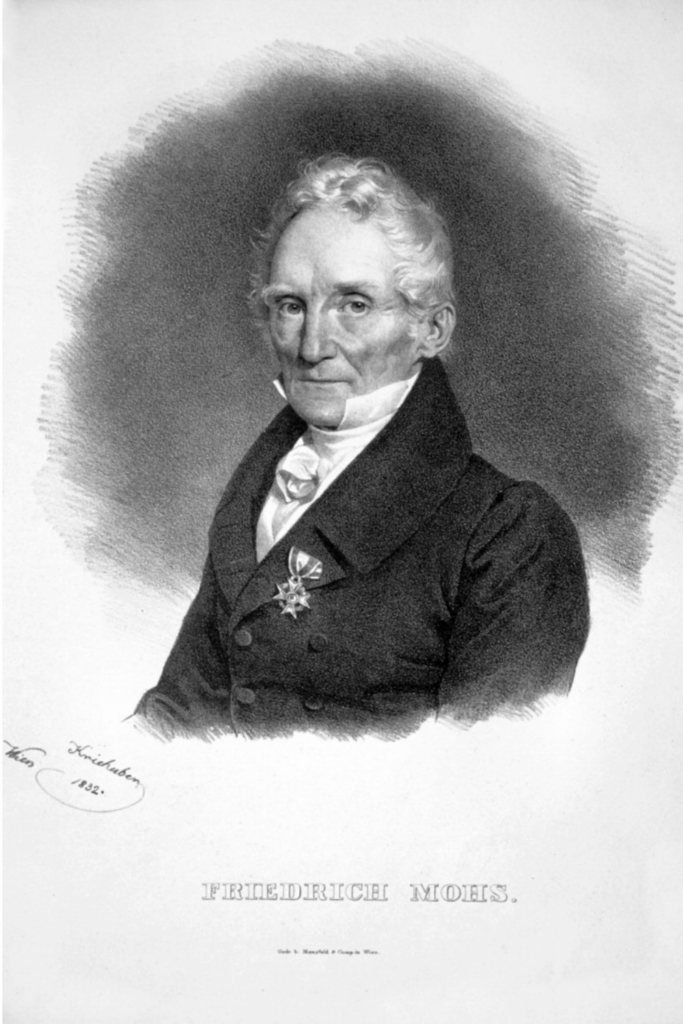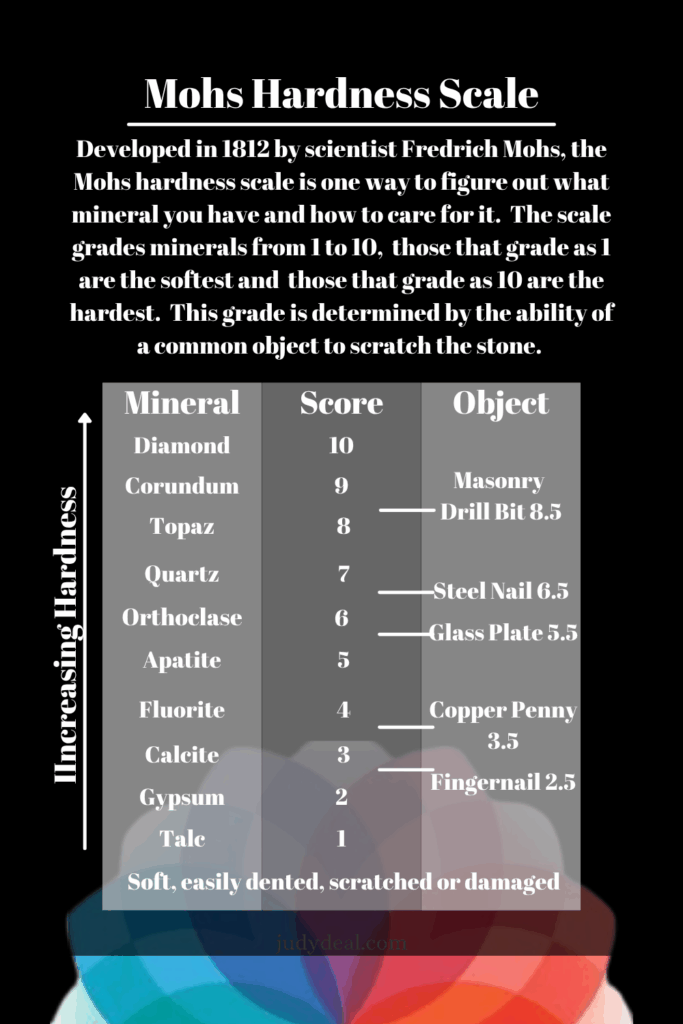The Mohs hardness scale ranks the ability of minerals to resist scratching. This information can also be applied to materials that do not qualify as minerals including fossils like ammonite or petrified wood.
Friedrich Mohs

Friederich Mohs was a German mineralogist born January 29, 1773. He studied mathematics, physics, and chemistry before focusing on mineralogy.
A minerologist studies the properties of minerals to properly classify them and determine potential ways to use them.
Mohs developed his hardness scale in 1812 while teaching in Austria.
He left this plane of existence September 29, 1839.
The Mohs scale
The Mohs scale of hardness ranks minerals on a scale of 1 to 10 based on how well they resist scratching. The softest mineral on the scale, talc, rates a score of 1 while the hardest, diamond, scores a 10.
The scale includes talc, gypsum, calcite, fluorite, apatite, orthoclase, quartz, topaz corundum, and diamond, and is arranged from softest to hardest.
The score is determined by the ability of a common object to scratch the mineral. Objects used to determine hardness scores include fingernail, copper penny, glass plate, steel nail, and masonry drill bit.

Use of the Mohs hardness scale
The Mohs hardness scale is useful in industrial applications, in determining the identity of minerals with similar appearance. It is also a helpful guide for the shaping, usage, cleaning, and storage of crystals, gemstones, and fossils.
It is important to note that the scale was designed as a guide, the levels of hardness are not evenly divided and that there are many minerals between each of the levels listed.
Photographs and other graphics used here and not otherwise identified are either my personal photographs and graphic design or accessed through the public domain.